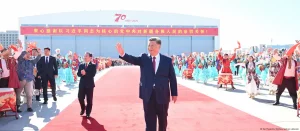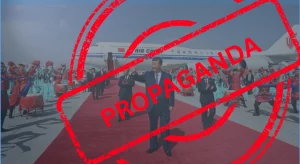by Mehmet Emin Hazret
A Silent Rise, Shadowed by Questions
As we move toward 2025, China’s rise in the aviation industry is more than just a technical achievement—it is also sparking serious ethical and geopolitical debates. The respected French business magazine Capital has drawn attention to the striking similarities between COMAC’s C919 passenger jet and the Airbus A320. Are we witnessing a new chapter in China’s long-standing strategy of “copying and mimicking” for technological transfer?
COMAC C919: A Symbol of National Pride or Replicated Innovation?
COMAC’s C919 is not just a passenger aircraft—it is promoted in China as a symbol of national pride. With over 300 orders placed, and 14 units delivered in 2023 and 2024, the model is making notable progress. However, aerospace experts have emphasized its strong resemblance to the Airbus A320. From cockpit layout to engine placement, cabin configuration to electronic systems, many components appear either identical or extremely similar.
The Critical Question: Was an Airbus A320 Disassembled in China?
In the early 2000s, one of the Airbus A320 units sold to Beijing reportedly “vanished under mysterious circumstances.” Former Airbus executive Patrick Devaux claimed the aircraft was completely dismantled and copied. Airbus made no official comment—likely in an effort to preserve its presence in the Chinese market—but European analysts have pointed to the disappearance as a key moment in China’s technological reverse-engineering efforts.
China’s History of Copying: Beyond Aviation
The C919 case echoes China’s broader approach to technology acquisition, which has extended far beyond aviation:
Telecommunications: Giants like Huawei and ZTE initially grew by replicating Western patents. Both the U.S. and EU later imposed sanctions, citing intellectual property violations.
Automotive: Companies like BYD, Chery, and Geely based their first-generation models directly on Western designs. Chinese EV rivals of Tesla have used similar strategies in software and battery systems.
Defense Technology: China’s J-20 fighter jet has long been compared to the U.S. F-22 Raptor. Even the stealth coating and radar technologies show marked similarities.
European Flight Certification: The Last Hurdle
COMAC’s most critical challenge remains securing flight certification from the European Union Aviation Safety Agency (EASA). This process could take 3 to 6 years. Still, while awaiting approval, COMAC is rapidly expanding in the domestic Chinese market and beginning to build a presence in other parts of Asia.
Conclusion: Technology Transfer or Strategic Ambition?
The case of the C919 demonstrates that China is no longer merely a technology importer. It now systematically internalizes Western know-how and turns it into competitive leverage. Europe and the United States have already begun to take this “silent technology war” seriously.
But the question remains:
Are companies like COMAC merely “copy centers” that undermine innovation? Or are we witnessing the first signs of a global shift in aerospace dominance—from West to East?
Time will tell.






Be First to Comment